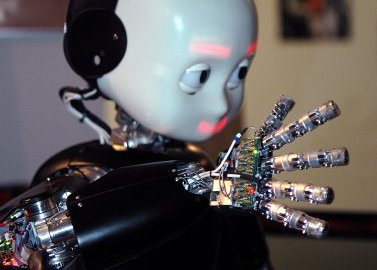Learning to Live With Robots

What’s the Latest Development?
For the next few months, twelve British volunteers will live in a house also populated by four domestic robots while a team of researchers observe their experiences. In the house is Sunflower, a medication scheduling and dispensing robot; CareRobot is a servant bot that fetches household items and offers food and drink; two Aibo dog robots provide companionship and entertainment. By making observations, researchers want to improve how the robots function and study their psychological effects on humans.
What’s the Big Idea?
Despite visions of the future where humanoid robots do the house chores and provide stimulating conversation, they have been slow to really appear on the scene. Our mechanical brethren have proven better suited to the factory, assembling and welding rods of steel. But as technology progresses and robots become capable of making our domestic lives easier, particularly for the elderly, their psychological effects on humans remain unknown. To avoid over-stimulation, only one robot in the test how is allowed to function at a time.





